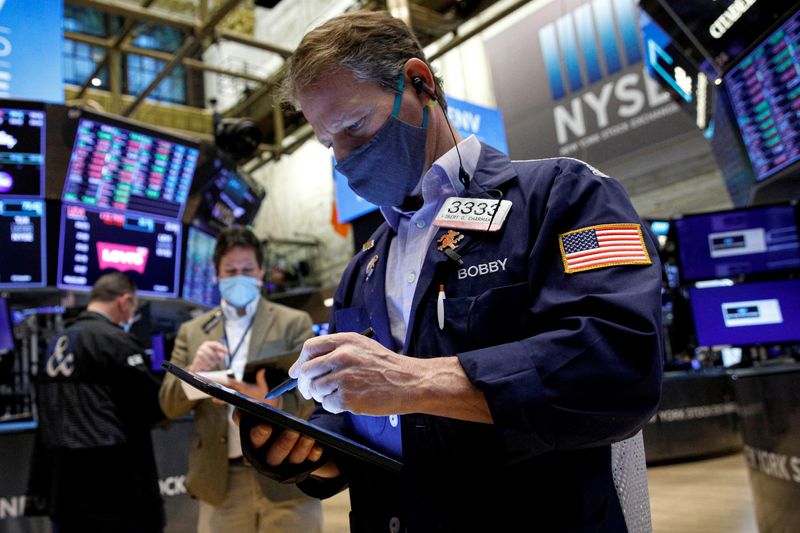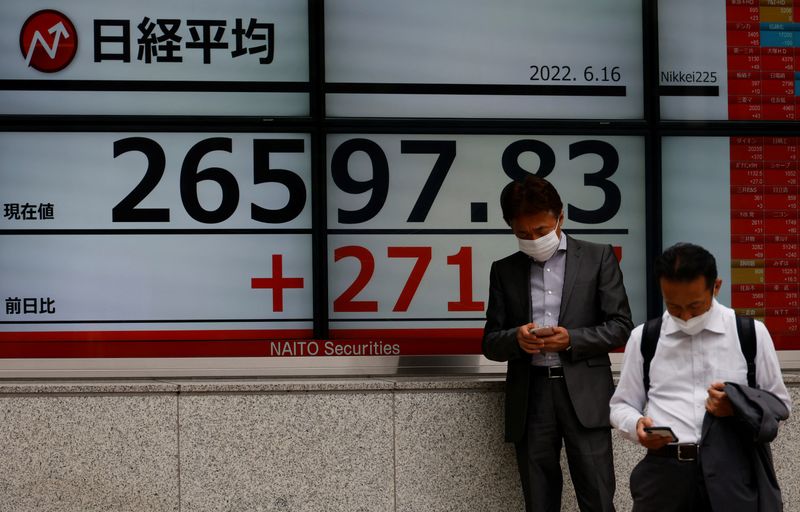By Pete Schroeder
WASHINGTON (Reuters) - Wall Street ended the day flat on Friday as Treasury yields jumped following a stronger-than-expected U.S. jobs report, which suggested the Federal Reserve may push further interest rate hikes to cool the economy and slow inflation.
Oil prices rose over 2% on Friday, but still were down on the week following a steep sell-off days earlier on concerns about energy demand in a potential economic slowdown.
Strong data from the U.S. Labor Department, which reported the United States added more jobs than expected in June, indicated a recession was not yet imminent amid persistent job growth, and gives the Fed scope to deliver another large interest rate increase later this month.
Nonfarm payrolls jumped by 372,000 jobs in June, well above economists' expectations. The unemployment rate held steady at 3.6%.
All three U.S. stock indices ended the week largely unchanged, as investors balanced solid economic news with the prospect of more rate hikes.
The Dow Jones Industrial Average ended down 0.15%, while the S&P 500 dropped 0.1% and the Nasdaq Composite added 0.12%.
"There has been a lot of doom and gloom recently, so a strong labor market read may assuage some fear of a recession and shows the resilient nature of our economy with a robust labor market in the face of hot inflation. The Fed is committed to raising rates aggressively to cool it, which will likely result in continued volatility," said Mike Loewengart, managing director at E*TRADE from Morgan Stanley (NYSE:MS).
Atlanta Fed President Raphael Bostic said on Friday he backed another three quarters of a percentage point interest rate increase, underlining the Fed's determination in tackling inflation.
Oil prices enjoyed a reprieve, but still ended the week lower after a steep sell-off earlier in the week on concerns over dwindling demand.
Brent crude was up 2.3% to settle at $107.02 a barrel. U.S. crude rose 2% to settle at $104.79 per barrel.
The dollar index was flat on the day after earlier hitting its highest level since 2002. And the euro drew close to parity with dollar last seen in mid-2002, having fallen 3% against the dollar this week on economic and energy concerns emanating from Europe. The euro was last up 0.19% at $1.01805.
Looming rate hikes also helped push Treasury yields higher, as a key part of the yield curve tracked as a recession indicator inverted further. Benchmark 10-year yields were last at 3.0822%, up from around 2.989% before the data. Two-year yields jumped to 3.0985%, from around 3.001%.,

The two-year, 10-year part of the Treasury yield curve inverted on Tuesday for the first time in three weeks. An inversion in this part of the curve is seen as a reliable indicator that a recession will follow in one to two years.
The MSCI world equity index, which tracks shares in 45 nations, was up 0.12%.
